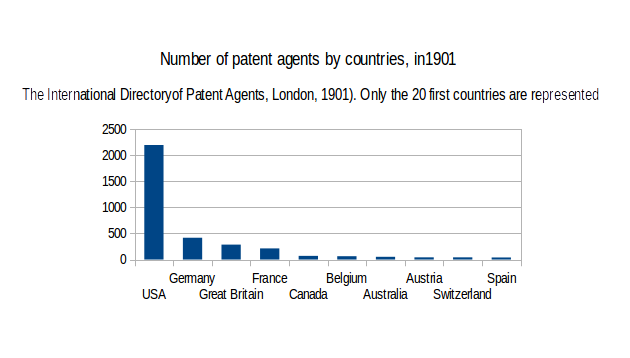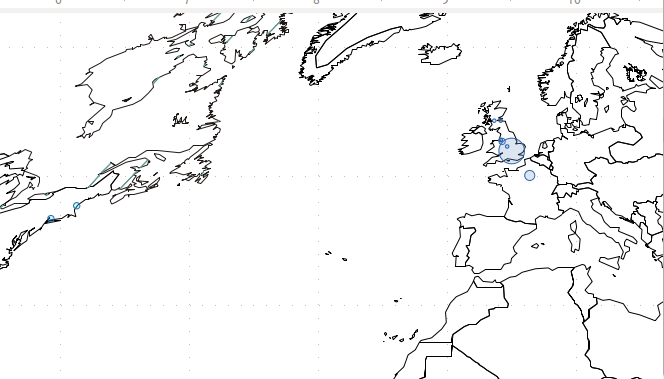Accueil > Un peu de recherche > Propriété intellectuelle / Intellectual property > The 1883 convention and the impossible unification of industrial property
International Workshop « International Diversity in Patent Cultures – a historical perspective » University of Leeds, 15-16 May 2014. http://www.rethinkingpatentcultures.com/
 The 1883 convention and the impossible unification of industrial property
The 1883 convention and the impossible unification of industrial property
Gabriel Galvez-Behar - Oral presentation
jeudi 19 juin 2014, par
Symbol of a global policy, the TRIPS agreement is often considered as a way to impose a Western intellectual property regime and, thus, as a form of neocolonialism. Some critical analysis of the Western intellectual property invite us to historicize its development and refuse therefore to consider the TRIPS agreement as the inevitable outcome of a teleological process.
Characterized by an early international regulation – with the creation of the 1883 Paris Convention on patents and trademarks, and with the 1886 Berne Convention on copyright – the history of intellectual property gives rise, it is true, to such a finalist perspective. For some, insofar as they were concluded when the Western countries shared Africa and the world, these treaties symbolize the first step of an imperial vision of intellectual property. The parallel is tempting : the late 19th century conventions would be to imperialism what the TRIPS agreement is to neo-colonialism.
However, concerning the industrial property, this analogy is problematic and threatens to revive the teleological perspective which is denounced. To what extent, in fact, did the 1883 convention constitute a form of imperialism ? How were the territories under the domination of Western countries embedded in the development of industrial property in the 19th century and the early 20th century ? Our paper has no other purpose than to offer some considerations about the patent right relating with these questions.
The starting point of my paper is an ISHTIP workshop I attended four years ago, when a participant told us that the 1883 Paris Union was a key moment in the « process of empires » dealing with industrial property. I was a bit surprised by this statement but it made me more curious about the international aspects of patent systems.
It is true, indeed, that the Paris Union is often celebrated – or denounced – as a milestone of the first globalization. Here my aim is to have a better understanding of the Paris Union by describing the process, which conduced to its adoption and by paying attention to the question of its extension, and, more particularly, in the colonies.
What kind heterogeneity did the Paris Union manage ?
The Paris Union is often described as a way to manage the heterogeneity of patent systems and we have to ask what kind of heterogeneity the actors faced at that time. Two sources highlights it.
The first one is the Tablettes de l’inventeur et du breveté [Handbook for inventors and patentee], which was published in 1865 by a famous French patent agent, Charles Thirion. Such an example illustrates the major role of patent agents in mapping the diversity of patent cultures. The second example is the Recueil général de la législation et des traités concernant la propriété industrielle, which was published from 1896 to 1912 by the International Bureau of the Industrial Property in Berne. Thanks to these two kinds of sources, we can map in our turn this diversity, even if such maps are difficult to be drawn – because of the changing borders and the contradictions between different records.

What is interesting, when you are a map maker, is that you have to think about what you want to represent, of course, but also about the scale you must use to represent it. Let’s talk about what we want to represent. If you are interested not only in law but also in “legal-bureaucratic points”, as said by Graeme Gooday, we can pay attention to the patent agents. According to the International Directory of Patent Agents we can catch a new kind of diversity, which is not a legal one. Actually, the heterogeneity of the patent systems in the late 19th century was not only a matter of law an procedures but also a matter of actors.

Let’s consider now the question of scale. When we do comparisons about the industrial property, we often use the national scale, like in Charles Thirion’s handbook. We know however that patenting is a very localized and concentrated practice as illustrate the next two maps. Paris, as you notice, was in the late 1860s the second city concerning the origin of the British granted patents. So we have to consider that the international level is de facto a relevant scale to analyze patenting.


Constructing the Paris Union
Actually patenting and patent law making are, as soon as the 19th century, a multilevel game and the Paris Union was a new moment in this game.
Some issues have to be stressed about the process conducing to the Union de Paris
- This process is strongly connected to the Patent Controversy and, in a way, it is a chapter of this controversy (probably the last one). It deals with the debates studied by Fritz Machlup and Edith Penrose, of course, but also with the British discussions about patent in the early 1870s. In a sense, the Vienna Congress in 1873 is an outcome of these issues.
- Actors involved in this process didn’t want to insist on what they consider as metaphysical questions about the nature of patents. They knew perfectly that such an insistence would prevent them from finding an agreement. But, these questions reappeared when they had to consider some practical issues like prior examinations or compulsory licences.
- The disagreements can not be resumed to a question of nationality. For instance, some French lawyers were in favor of prior examination but they represented a minority in France.
- All this people wanted to find an agreement despite their disagreements. A failure would have been a terribly source of contestation of each national patent systems. It is the reason why Charles Jagerschmidt, the French public servant who prepared the 1880 draft, choose to remain silent on possible causes of disagreements.
- For this reason, the 1883 Paris Union seems less ambitious than the first intentions. It did not unify the patent laws although some issues of the treaty made the national patent systems evolve in convergent ways. Actually the Paris Union did not make the diversity disappear but it controlled and tried to limit it.
What about the colonies ? Actually colonies were not a major issue of the process conducing to the Paris Union. Even if a resolution of the 1878 Congress on Industrial property mentioned the colonies, this issue disappeared in the bill, which was prepared by the French diplomat Charles Jagerschmidt. Afterwards, although the first revision conferences tended to deal with the problem of colonies, thanks to a British initiative, the Spanish and the US opposition prevent from solving it. Only in 1911, at the Washington conference, the colonies were explicitly mentioned in the treaty. To sum up, it appears that we can not consider the Paris Union an imperial tool, even if the questions would arise differently by taking the question of trademarks into account.
Things changed after WWI however. The Paris Union resisted the Great War and during the Interwar period the Union was included in a new transnational framework. Actually the IP regime changed thanks to the involvement of new organizations like the League of Nations – and more precisely its economic committee – or the International Chamber of Commerce. Besides the US government adopted a very aggressive attitude in order to promote the US patent system. We know that the USA imposed their patent law in Cuba and in the Philipines after 1898. During the 1925 Conference in the Hague they tried to change deeply the Paris Union by claiming for reciprocity and for compulsory licences. In 1925, the imperial dimension was a stake – but not and essential one – so that the BIRPI tried to contain the influence of Empires to protect the interest of small or colonised countries.
Conclusion
Regarding the patent systems, national and international levels – and more precisely local and interlocal levels – are always connected. Let’s just remind the Parte Veneziana to be convinced of that. These interconnections doesn’t justify, however, to draw a continuous line from the Paris Union to WIPO, for instance, to suggest that IP would be the cheval de Troie of a global imperialism. On the contrary, this link suggests that the diversity is still there and that its management, and maybe its preservation, is a matter of choice.
Gabriel Galvez-Behar – Université de Lille